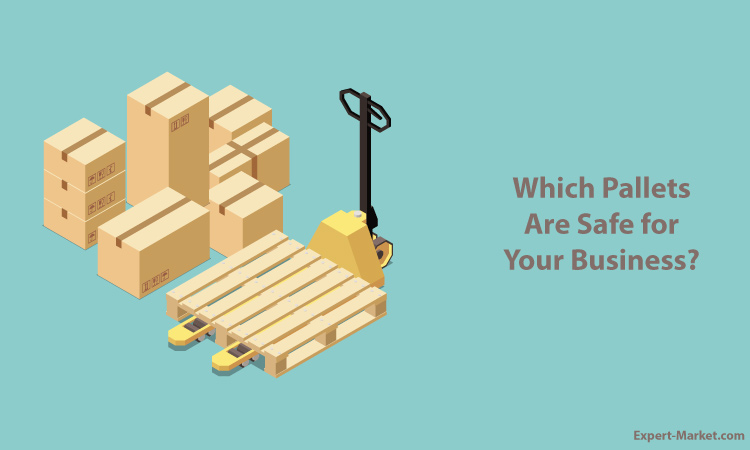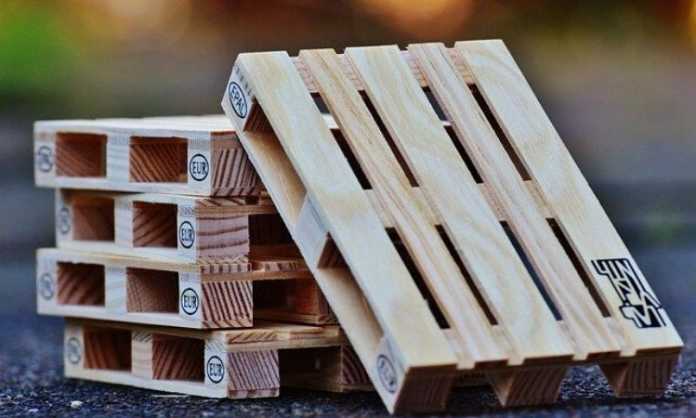Originally, pallets were made as a form of tertiary packaging. Their flat structure is ideal for storing and transporting different goods and ensuring that they stay intact when handled with equipment, like conveyors, forklifts, and pallet jacks. However, today, pallets are becoming more mainstream, with a lot of people using these in different areas of their homes.
Regardless of the purpose, you should always pay attention to the pallets you plan on using. If you’re going to use wooden pallets for your business, for example, buying ones that have substandard or poor quality can become the reason why your products will go to waste. These pallets can also harm employees and put them at risk of accidents and injuries.
Make sure that none of these happen to you by always checking if the pallets are safe to use. Here are ways you can do it:

1. Assess If The Pallets Are Clean
Goods, regardless if these are to be used or eaten, should always be clean. Delivering unsanitary products to your customers can put your business in a bad light. How can you impress them if your packaging has stained the goods? Do you think you can stand out from the competition if your products are covered in dirt? For you to deliver clean products to your customers, always check the cleanliness of the pallets you’re planning to use.
The cleanliness of the pallets is important because this can affect their durability and, at the same time, the condition of your goods. Pallets that have signs of leakages or spills, regardless of how small, should not be used. You should never use pallets that have spills from oil, food, and other unknown substances, as this can put your own or your workers’ safety on the line as well.
Moreover, spills can make the pallets very weak. For example, if the pallets have been spilled with liquids and drenched in them for long periods, the pallets will likely break the moment they’re lifted from the ground. This can cause injuries to the person carrying them or damage the goods they contain.
2. Look For Markings And Stamps On The Pallet
The cleanliness of the pallets can give you an idea of their safety. However, merely relying on this aspect can be difficult because people are very subjective as to what is clean or not for them. Your basis of “clean” might not be the same as that of other people.
For you to be sure, spend some time to check different parts of the pallets and look for specific markings and stamps. Wood packaging materials, such as pallets, are marked and stamped before these are heated as a part of the regulations set by the state. These regulations ensure that all wood packaging materials are protected from any insect infestation during the manufacturing process.
Here are some of the most common markings and stamps you should look for on your pallets:
- The IPPC logo: Pallets that have the International Plant Protection Convention (IPPC) logo means that the material used comes from international sources that don’t carry plant disease or invasive insect species.
- 1111: These numbers symbolize the unique certification number given to the treatment provider or manufacturer of the pallets. With these numbers, the pallets can be traced easily back to their provider or manufacturer.
- Compliant Stamps: These stamps vary from one manufacturer to another. Compliant stamps usually indicate additional information of the manufacturers, such as their physical address and contact number, for identification purposes.
3. Avoid MB Pallets
There are different ways pallets are made. While some manufacturers would use heat treatment (the wood used to make the pallets are heated to at least 132.8 Fahrenheit for 30 minutes), others use debarking (the wood is debarked before its production). However, some manufacturers would use chemical fumigation as the method of treatment for their pallets, and this is something which you should avoid at all costs.
Chemical fumigation, often marked as MB in the pallets, uses methyl bromide. Although this chemical is popular because of its ability to kill pests in wood, methyl bromide is also linked to countless human health problems, such as abdominal pain, convulsions, headaches, and labored breathing (when inhaled).
If your skin comes into contact with pallets with MB stamps, you can suffer from severe redness, pain, and blisters on your skin.
Safety First
You can buy different types of pallets almost anywhere today. Regardless of the goods you’re planning to transport and the budget you have right now, there will always be a certain type of pallets that suits your needs.
However, when choosing, it’s not enough that you merely consider your needs and budget. If you want to get value from the pallets you’ll buy, you should always make sure that it’s safe to use. Buying pallets without making the necessary inspections can only result in accidents, causing you to spend more money.



























